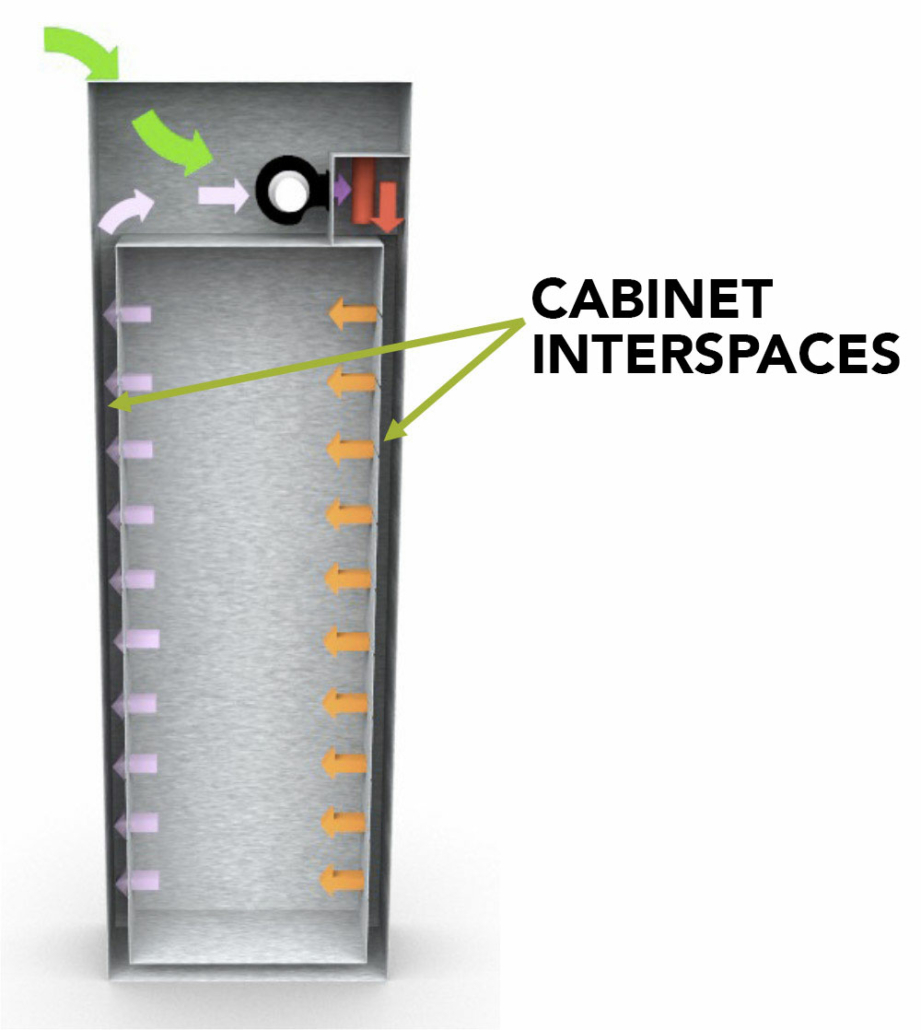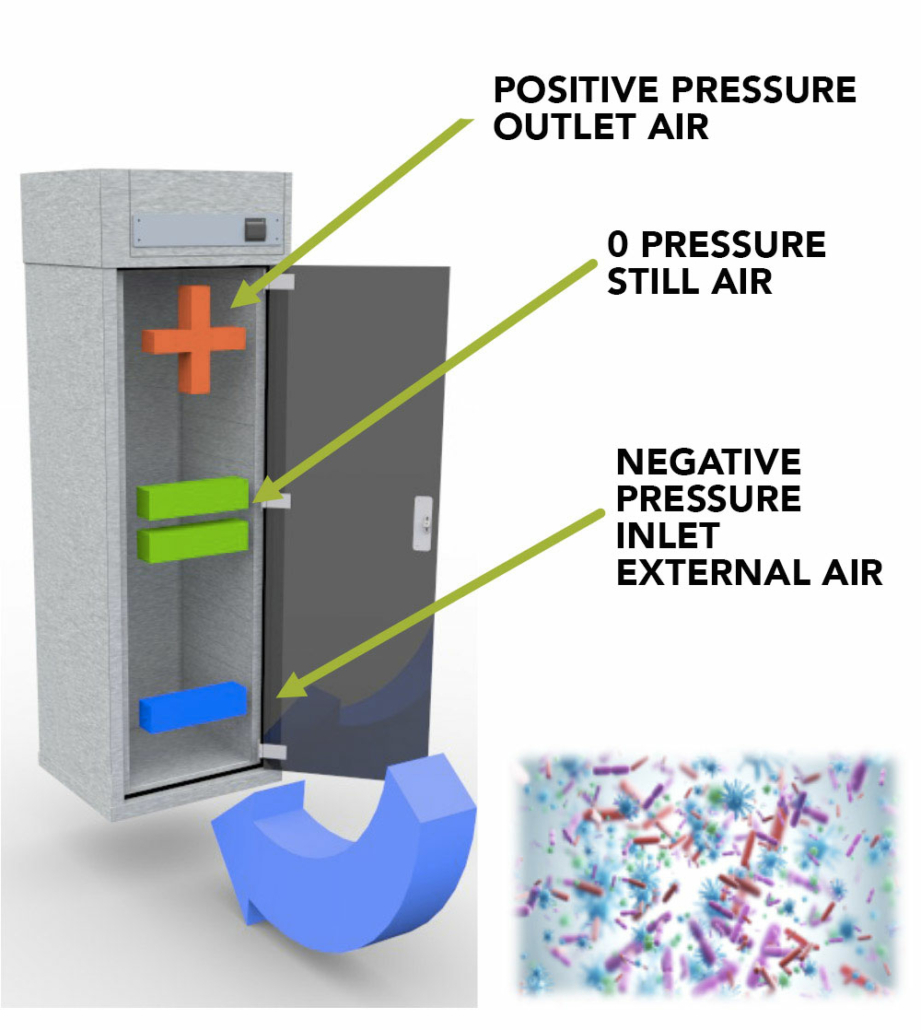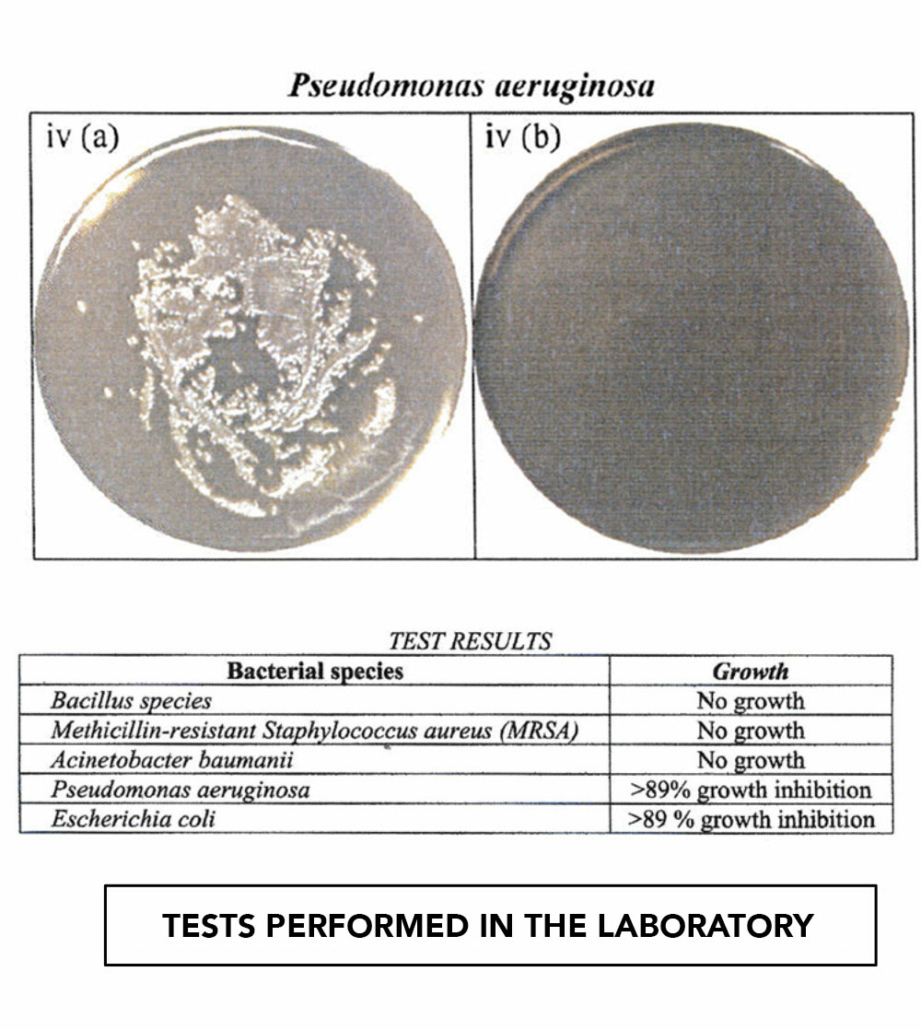Drying cabinets, new technologies applied – Speaker: Andrea Fabbri
INTRODUCTION
Drying cabinets for endoscopes comply with EN ISO 16442:2015 are not considered medical devices (pg.2 note 4 ver.ita) notwithstanding the fact that to date the current technologies applied to these devices are on average superior to what is required by the standard and that European manufacturers consider and certify them as medical device class I, their purpose is not only to dry but also to prevent external contaminations from affecting the work of endoscope cleaners and operators.
In the air, as we know, there are millions of viruses and bacteria, especially as long as endoscopes are run as ‘normal’ wards, i.e. without special filtration or differentiated pressures in the rooms.
The standard envisages a 1-hour test with the cabinet door closed and under positive pressure (pg. 26 appendix c.3 ver.ita) to check that the filtering systems in the cabinets (minimum required by the standard h13 en 1822-1 certified filters / bacterial retention 99.95%) are able to retain bacteria with a maximum allowed contamination of 50 cfu inside the cabinet.
This test is then also used to check the filtering system for longer periods (3 days, 7 days, 31 days) it goes without saying that the test is severely limiting, for 2 reasons basically:
1- it does not take into account viruses which, as we have seen during covid, there are types that can survive even outside the human body for several hours/days.
2- it does not take into account the actual operation, i.e. the continuous opening and closing of the loading/unloading door (the test of 1 hour in the standard is correct but carried over several days obviously not).
ENDOSCOPY, THE 16442:2015
Some basic points
PARAGRAPH 4.3 – MAXIMUM ENDOSCOPE DRYING TIME 3 HOURS
the drying time of the endoscope channels and the drying time of the outside of the endoscope should differ in favour of an extremely short time for the inner channels, following the time indicated by prof. Miorini (Austria) of a maximum of 5 minutes, this because of the way the channels are internally connected.
It goes without saying that thermo-ventilated cabinets are more efficient and quicker for drying endoscopes, and that they can maintain lower relative humidity parameters than those which are only ventilated, even though both systems are required by the standard as long as they meet the required parameters. The problem here, of course, is the possibility of bacterial proliferation if the external environment is very humid (bacterial replication time of 20 to 60 minutes under optimal conditions).
APPENDIX B – CROSS-CONTAMINATION BETWEEN ENDOSCOPES
The standard takes into consideration the possibility of having a contaminated endoscope inside the storage cabinets and regulates the tests to be carried out; again, the possibility of viral or bacterial contamination from other parts of the storage cabinet, such as cavities, is not considered.
The standard regulates the need for regular decontamination/cleaning of storage cabinets (paragraph 5.3 p. 8 ver.ita), but does not deal with the ducts that bring air to the storage cabinet, ducts that can/are already contaminated before the cabinet is installed in the endoscopy room.
SYSTEMS TO CURB THE PROBLEM OF CROSS-CONTAMINATION IN ENDOSCOPE CABINETS
PASSIVE SYSTEMS:
PASSIVE SYSTEM:
Use of higher-grade filters validated in H14 – 99.99% retention for bacteria or validated for viruses and bacteria from 3 to 5 nanometres.
This system improves safety from external contamination but does not solve the problem of self-contamination of cabinets in cavities and from loading and unloading endoscopes.
Thermoventilation – normally between 30°c and 40°c this system improves and stops bacterial proliferation by removing moisture but does not solve the problem of contamination from viruses and from loading and unloading endoscopes.
ACTIVE SISTEM:
In order to better understand the problem of possible contamination, I have ideally sectioned off a cabinet with a high degree of energy efficiency and thermoventilation.

As you can imagine, the operator cannot reach the cavities in order to sanitise them regularly, and often not even the technician is able to do this, and in any case there would remain interventions 1 to 2 times a year to be carried out during routine maintenance.
Another problem that has never been addressed before is the external contamination resulting from the continuous opening and closing of the loading/unloading door of the cabinets, as shown in the figure to the side and you can see an example of a thermo-ventilated cabinet and its problem, the problem is, albeit with different dynamics, present in cabinets that are only ventilated.

Questo problema ci ha portato a pensare su come migliorare e ridurre il rischio da contaminazione esterna e crociata all’interno degli armadi, trovando nei sistemi al plasma (attualmente in commercio per debellare il covid e altri virus nell’aria) una soluzione.

Testing the case on forced contamination of cabinets with 10 6; viruses and bacteria resulted in a significant reduction of over 900,000 colony-forming organisms, using EN 17272:2020 – surface disinfection – as the standard (although normally applied for liquid disinfectants). Although this technology is already applied to environmental sanitisers, it was possible to make the application innovative for the endoscopy sector.
Therefore, by inserting this cold plasma system directly after the bacteriological filter, it is possible to maintain the cavities and storage compartment of endoscopes aseptically with greater efficiency, even in the presence of external contaminants that may penetrate and contaminate the endoscopes during the normal loading and unloading process by nurses.





